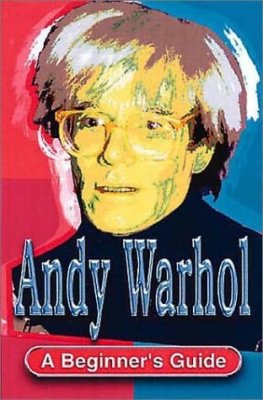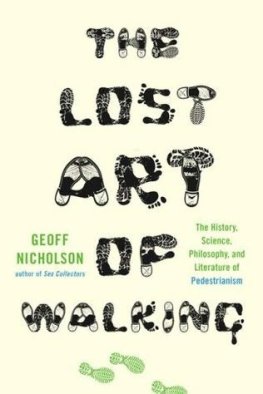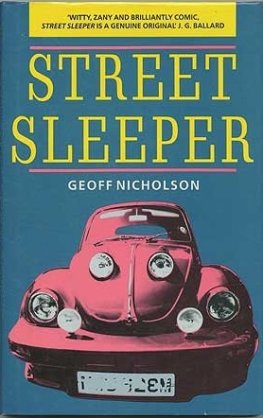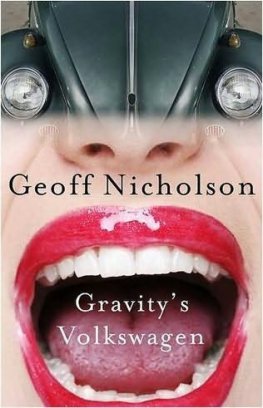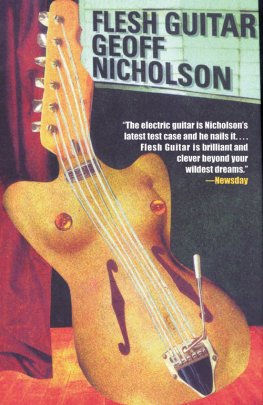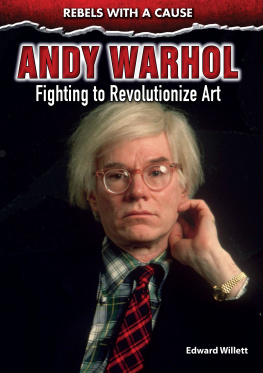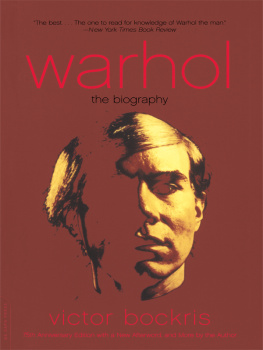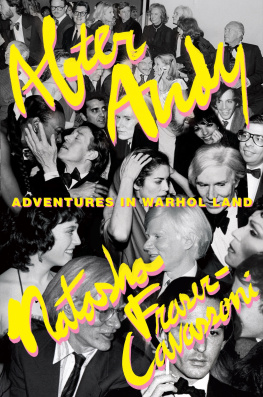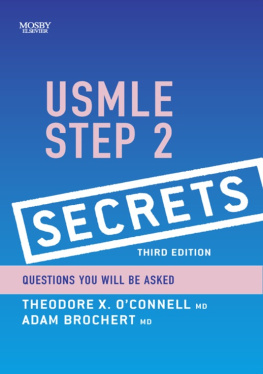Geoff Nicholson - Andy Warhol
Here you can read online Geoff Nicholson - Andy Warhol full text of the book (entire story) in english for free. Download pdf and epub, get meaning, cover and reviews about this ebook. year: 2002, publisher: Hodder & Stoughton, genre: Non-fiction. Description of the work, (preface) as well as reviews are available. Best literature library LitArk.com created for fans of good reading and offers a wide selection of genres:
Romance novel
Science fiction
Adventure
Detective
Science
History
Home and family
Prose
Art
Politics
Computer
Non-fiction
Religion
Business
Children
Humor
Choose a favorite category and find really read worthwhile books. Enjoy immersion in the world of imagination, feel the emotions of the characters or learn something new for yourself, make an fascinating discovery.
- Book:Andy Warhol
- Author:
- Publisher:Hodder & Stoughton
- Genre:
- Year:2002
- Rating:4 / 5
- Favourites:Add to favourites
- Your mark:
- 80
- 1
- 2
- 3
- 4
- 5
Andy Warhol: summary, description and annotation
We offer to read an annotation, description, summary or preface (depends on what the author of the book "Andy Warhol" wrote himself). If you haven't found the necessary information about the book — write in the comments, we will try to find it.
Andy Warhol — read online for free the complete book (whole text) full work
Below is the text of the book, divided by pages. System saving the place of the last page read, allows you to conveniently read the book "Andy Warhol" online for free, without having to search again every time where you left off. Put a bookmark, and you can go to the page where you finished reading at any time.
Font size:
Interval:
Bookmark:
Geoff Nicholson
Andy Warhol
1 Introduction
It would be hard to overestimate the importance that Andy Warhol and his work have for the contemporary visual arts. His work addresses and indeed embodies most of the major themes and dilemmas that confront modern artists.
These might be briefly described as: the role of popular culture and the mass media, the significance of the reproduced image, the nature of fame, celebrity and glamour, issues of sexuality, gender and representation, and not least, irony.
He is by any reckoning a Pop Artist. His paintings of soup cans and Coke bottles, of Elvis Presley and Marilyn Monroe, of car crashes and electric chairs, provide some of the most distinctive and identifiable images in Pop Art*, and have done so since the early 1960s.
A twentieth-century art movement that takes us images from consumerism, the mass media and popular culture, and simultaneously subverts and celebrates them.
Yet he now appears to be an artist of much wider and greater significance than the term Pop Art suggests. He also belongs, at least in part, to a number of other artistic traditions: Minimalism, Dadaism, conceptual art, and above all portraiture, not least self-portraiture.
1: A movement that strips art down to its elemental forms, relieving it of subjective or personal expression. Artists include Donald Judd and Carl Andre.
2: A largely nihilistic artistic movement which believed in the subversion of traditional art and culture. Mists include Tristan Tzara and Marcel Duchamp.
3: Art that is more concerned with ideas than with representation. Its appeal is therefore intellectual rather than visual. Artists include Joseph Beuys. Christo. Yoko Ono.
Although he is best known for his works on paper and canvas, his work as a filmmaker, photographer, diarist, and occasionally as a sculptor (or at least maker of objects) and even as a product designer, share much of the same aesthetic.
Early in his career Warhol was perceived as a charlatan who had contempt for the art establishment and for the general public, and perhaps for art itself. Bringing paintings of soup cans or dollar bills into the temple of high art was seen as a deliberate desecration. Today it seems not so much that he hated high art, but that he was changing the nature of what art could be, and blurring forever any hard and fast distinction between high art and low.
Certainly he was a prankster and a provocateur. There undoubtedly is something outrageous in filling an art gallery with 32 more or less identical paintings of Campbells soup cans. It was new and it was attention-grabbing. The soup cans demonstrate that even though Warhols art often has a blankness and a banality to it, it is never quiet or introverted.
Warhols other provocations included sending a Warhol impersonator out on a lecture tour, having his assistants make his paintings for him, having his mother sign his work, publishing a novel that he claimed never to have read, since it was made up of transcriptions of other peoples telephone calls, and publishing a book of photographs called America that contained pictures taken in France.
You could argue that these subversive activities sometimes got in the way of the art, but it might be truer to say they were intrinsic to it. If these things demonstrate an amused scepticism about art, it is surely one that any sensible observer of the modern art scene is likely to share. In that sense we get the feeling that Warhol is on our side.
Robert Hughes in American Visions says that Warhols art;
all flowed from one central insight: that in a culture glutted with information, where most people experience most things at second or third hand through TV and print, through images that become banal and disassociated by being repeated again and again and again, there is a role for affectless art. You no longer need to be hot and full of feeling. You can be supercool, like a slightly frosted mirror.
This tells only half the story. Certainly you would be hard pressed to claim that all of Warhols art is hot and full of feeling, yet it is seldom quite as blank or affectless as both its fans and critics claim. Series such as the electric chairs, the car crashes, the atom bomb explosions, the skulls, the Jackie Kennedy and Marilyn Monroe portraits, extract very powerful feelings from apparently disassociated and exhausted images. In that sense his art is about renewing and revitalizing feelings, not about escaping from them.
Warhol is perhaps unusual in not having created any single masterpieces; there is no Mona Lisa, no Guernica in his canon. All his great works come in multiples; many soup cans, many Coke bottles, many Marilyns, many Maos. There was no doubt a commercial principle at work here. There was a large demand for Warhols work and he was eager to satisfy it. On the other hand, the art world is such that scarcity can also create value; the prices of Francis Bacons paintings, for instance, rose so high because he destroyed so many of them.
But financial art market considerations aside, it seems completely appropriate that Warhols art is so plentiful, so abundant. He is concerned with the world of mass media and mass production, with repeated images and standardized everyday products, with glut and overload. It would be absurd if he had created only a few tortured, costive works of art.
We should treat with suspicion the much repeated line that Andy Warhol was his own greatest creation, yet there is no doubt that he lived and looked the part of the Pop Artist the cool, detached, opinionless observer and this was a role he worked hard to establish and maintain. In this role he finds life with its attendant relationships, sex and love, endlessly difficult. He says hed prefer not to care. He says he wants to be a machine. He tells interviewers they should just make up what they want him to say and hell say it. Whether he actually meant any of this is beside the point.
The Warhol persona inhabits a strange territory between the naive and the faux naif*, between the instinctive and the artificial.
Someone or something that has the appearance of naivety but in reality is very knowing and sophisticated.
It is a pose but it is not completely fake. When it was suggested to Paul Morrissey, the chief collaborator on the later Warhol films, that Warhol was an idiot savant*, he replied, Well, I dont know about the savant part.
Term used to describe individuals who display little obvious intelligence but are able to perform formidable mental or artistic tasks.
There is no doubt some personal spite in this comment, but Truman Capote seemed to be of much the same opinion when he described Warhol as a sphinx without a riddle.
In a 1968 exhibition catalogue, Warhol was quoted as saying;
If you want to know all about Andy Warhol, just look at the surface of my paintings and me, and there I am. Theres nothing behind it.
One is, of course, free to decide to what extent this is a pose, and how far it is said for effect, ironic or otherwise.
You might also wonder whether this is a genuine attempt to demystify his art or just another form of mystification. After all, nothing reinforces a mystery quite as much as saying that theres no mystery at all. Either way, Warhol is reacting to a long tradition which claims that serious avant-garde art could not be understood without the benefit of an elaborate intellectual theory, what Tom Wolfe calls the painted word. Of course it is in the nature of theory that it can be applied where it is not required, but Warhol is surely the least theoretical of artists. When he says that what you see is what you get, you can hear a whole army of lay art enthusiasts breathing a collective sigh of relief.
Font size:
Interval:
Bookmark:
Similar books «Andy Warhol»
Look at similar books to Andy Warhol. We have selected literature similar in name and meaning in the hope of providing readers with more options to find new, interesting, not yet read works.
Discussion, reviews of the book Andy Warhol and just readers' own opinions. Leave your comments, write what you think about the work, its meaning or the main characters. Specify what exactly you liked and what you didn't like, and why you think so.

